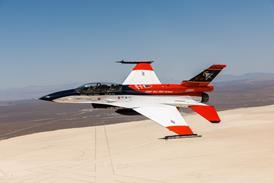The fragile economic climate continues to bring mixed fortunes for business aircraft manufacturers. Customer confidence remains fragile - particularly in the traditional markets of North America and Europe - battering sales prospects and shrinking orderbooks, mainly at the bottom half of the business aircraft spectrum.
The collapse of the light jet sector from 2008 led to the demise last year of Emivest Aerospace, developer of the seven-seat SJ30. In 2008 the UAE-based company had bought 80% of the assets of struggling Sino-Swearingen Aviation with hopes of revitalising that outfit's lone project. It delivered only two aircraft.
"Business aircraft have been hit harder by the economic downturn than any other aerospace market," says Richard Aboulafia, chief analyst with US-based consultancy Teal Group.
"After record growth in 2003-08, the market fell by 28% [in value of deliveries] between the 2008 market peak and 2010."
Aboulafia says that while this market decline is typical of a downturn, "these topline numbers" understate the pain felt by a large part of this industry. "The top half of the market - jets costing $26 million and above - actually grew through the 2008-10 downturn, with deliveries rising by 1.5%. The bottom half - jets costing $4-25 million - fell by a catastrophic 57.1%," he says.
This sector's traditional customer base - high-net-worth individuals such as fractional owners - declined rapidly following the financial crisis, forcing a glut of unwanted aircraft on to the used market, where prices hit an historical low.
"The market has never seen bifurcation like this in any previous downturn or growth period," he says.
Aboulafia is confident, however that the market, while remaining flat this year, will start to grow again in 2012. "Key leading indicators offer encouragement. Corporate profits and other global wealth indicators are up very nicely. Used jet availability is falling. Pricing is still soft, and there are a few dark clouds in the world economy that could complicate the recovery, but there are enough positive signs to believe that the market is poised for a turnaround."
In its latest business aviation forecast to be published at this month's EBACE business aviation exhibition in Geneva, Teal forecasts production of 14,905 aircraft worth $296.8 billion (in 2011 dollars) between this year and 2020.
Of the traditional business jets in Teal's forecast, 62% by value will be high-end models such as the Gulfstream G550/G650 and Bombardier's Global family of aircraft. "This is up from 50% before the 2009 market drop, reflecting our belief that the bottom half of the market will not recover faster than the top half, implying a permanent shift in favour of more expensive models," says Aboulafia.
BOMBARDIER
This view is shared by Canadian airframer Bombardier, which in 2010 doubled its high-end business jet offering with the launch of the ultra-long-range Global 7000 and 8000. The aircraft will sit at the top of Bombardier's product line, above the super-large 5000 and long-range XRS to enter service in 2016 and 2017 respectively.
The 7000 will have a top cruise speed of Mach 0.90 and a range of 7,300nm (13,500km) at M0.85 carrying 10 passengers. The Global 8000 offers a maximum range of 7,900nm at M0.85, carrying eight passengers. Both models feature an all-new, high-speed transonic wing and will be powered by 16,500lb-thrust (73kN) General Electric TechX engines.
 |
|---|
© BombardierBombardier doubled its high-end business jet offering in 2010 with the launch of the Global 7000 and 8000 |
The aircraft also have enlarged windows, with 80% more surface area than the existing Global models. "We are a leading player at the top end of the market and have made phenomenal investments in the Global family [which also includes the 5000 and XRS]. We are continuing our commitment to this sector with the 7000 and 8000," says Bob Horner, Bombardier's senior vice-president of sales.
He says that while the market has been tough, with sales across its Learjet, Challenger and Global families hurt by the soft trading conditions, "the Globals were least affected by the downturn and are the first the recover".
He points to Bombardier's latest business aircraft forecast, which predicts demand for 2,200 long-range business jets, valued at $104 billion, over the next 10 years. "The large category is expected to expand faster than the other categories," the report says. "The recent shift in demand towards more international customers has driven the sales of larger aircraft. International customers acquire their first aircraft within the large category and also seem more willing to pay a premium for additional comfort and technology."
Bombardier's confidence in the long-term future of this sector was borne out late last year with a landmark $6.7 billion order from fractional ownership leader NetJets for 120 Global jets. In value terms, the deal is the largest in the history of business aviation, and it marks NetJets' first acquisition of Bombardier types. "It is fantastic," Horner says. "This deal was a real game changer and gives an endorsement to the Global product line."
Bombardier is planning to deliver the first Global XRS Vision equipped with the Rockwell Proline Fusion flightdeck in January 2012, shortly after the final classic XRS is handed over.
 |
|---|
Deliveries of the 5000 Vision will begin around the same time with NL Holdings - a company run by former Formula 1 racing driver Nikki Lauda - as the launch customer.
In its last fiscal year, to 31 January, Bombardier delivered 143 business jets, 34 fewer than the previous year, and expects to deliver 150 aircraft in the 11-month period to 31 December. "Despite these difficult trading condition we have continued to invest heavily in new products as well as our sales and support network, including an extra 13 sales people in the US and across the world, so we will be a strong position when the market recovers," says Horner.
Work on the flagship Learjet 85 has continued at pace and it remains on target for 2013 delivery. "The entire manufacturing process has been brought under the Bombardier umbrella," Horner says.
The airframer's manufacturing base in Querétaro, Mexico which will build all primary structural components for the midsize business jet was inaugurated last year.
Bombardier's Belfast, Northern Ireland facility will produce the midsize aircraft's advanced composite wing skin panels and spar components and ship them to Querétaro for final assembly. The aircraft will be assembled in Wichita. "This Learjet is proving very popular," says Horner. "We haven't lost a single order for this aircraft, despite the crisis."
CESSNA
With much of its product offering in the bottom-half and worst-hit sectors of the business aircraft marketplace, Cessna has been struggling to claw its way out of the doldrums. The airframer has cut more than half its workforce and married production rates with its weak orderbook.
Last year Cessna delivered 179 Citation jets, down from 289 in 2009, and expects to ship around the same number of business jets this year. Geopolitical issues such as the Libyan conflict or the unrest in the Middle East are causing some unease "but the big problem remains the economy", says Jack Pelton, chairman, president and chief executive until he retired at the beginning of May.
Cessna's largest markets of Europe and the USA are "not doing so well" so the airframer is intensifying its focus on international markets, particularly South America and Asia, where sales activity is increasing.
"The market started to pick up in 2010 with more proposal activity, but it is still hard to pin down a deal and it doesn't take much for a customer to walk away," Pelton says.
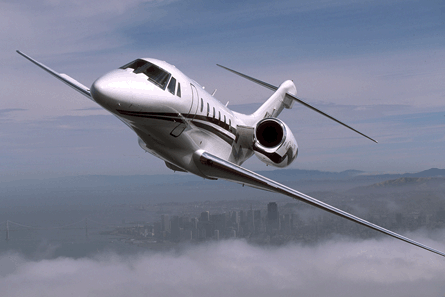 |
|---|
© Cessna |
Poor sales of its CJ1+ light cabin business jet persuaded Cessna earlier this year to halt its production after selling only 100 aircraft over six years. "It just wasn't selling," Pelton says. "We have two great products on either of the CJ1+, with the entry-level Mustang and the CJ2+, and our other light-cabin aircraft, the CJ3 and CJ4, are doing well." Pelton has not ruled out bringing a version of the CJ1+ back "but not in its current form", he stresses. The last aircraft will be handed over in September.
Cessna is examining potential upgrades to its super-light and medium-sized business jet line to challenge Embraer's Legacy 450 and 500 development programmes. The new aircraft would replace the $12.5 million Citation XLS+ super light twin and $17.6 million midsize Sovereign.
"We will continue to invest in research and development to ensure that our existing markets are protected and catered for," Pelton says. Late last year, the manufacturer launched an upgraded version of its largest and fastest jet, the $22 million Citation X, with enhanced Rolls-Royce AE3007C2 turbofan engines, elliptical winglets and a new Garmin G5000 integrated avionics suite. First flight of the Ten is scheduled for December 2011, followed by certification in second quarter of 2013 and service entry in the third quarter of 2013.
The super-midsize Citation X sits at the top of Cessna's product range and Pelton is keen to expand its portfolio up to the large-cabin market, despite mothballing its flagship Columbus in 2009. He suggests if the aircraft been launched earlier and entered service before the financial downturn, Cessna would have been cushioned from the worst of the economic crisis.
 |
|---|
"We would have experienced cancellations like everyone else, but large-cabin aircraft were less affected by the downturn and are making a much strong and quicker market recovery," Pelton says. "However, we had to make a choice between spending our money on the Columbus or neglecting our core market. The choice was clear."
DASSAULT
Investing in product development is an ongoing commitment for Dassault. The French airframer is poised to launch at EBACE a new version of its venerable Falcon family and is working at full throttle to bring its SMS business jet, previously dubbed the Future Falcon, to market in 2016.
Little is known about the aircraft and Dassault "intends to keep it that way for another two years", says senior vice-president of civil aircraft Olivier Villa. Two windtunnel test have been completed at high speed, he says. "Aircraft performance has been finalised, we have validated its shape and the joint definition phase has begun with most of our major suppliers."
The SMS is widely believed to be positioned in the super-midsize category at the bottom of Dassault's high-performance aircraft product line. This slot was vacated by the phasing out of the 50EX in 2007.
 |
|---|
© BillypixDassault is poised to launch a new member of its Falcon family of business jets this EBACE |
Meanwhile, sales of the current Falcon range have stabilised. "After the market fluctuations and turmoil of the past two years, [we're] happy to see that things are getting back to normal," Villa says. "We are now having active discussions with customers but they are still very cautious and are looking for the best possible deal."
This approach to aircraft buying is, says Villa, particularly prevalent in China, where Dassault recently sold five long-range 7Xs to HNA Group. "This market is very active, but the Chinese are tough negotiators," Villa concedes.
The 7X is doing "particularly well". There is a negligible pre-owned market for this type - "probably one or two aircraft at any given time" - so the prices and backlogs have remained quite strong. But the same cannot be said of Dassault's DX offerings, which it decided to withdraw late last year after delivering 40 aircraft.
"The 900DX and 200DX were introduced [in 2005 and 2008 respectively] for people who wanted a large cabin but not a long-range aircraft," says Villa. "The aircraft weren't selling - three 900DXs were delivered last year and no 2000DXs - and it had become too costly to produce them."
Dassault delivered 95 aircraft in 2010, including the first 900LX trijets, but is set to decrease its production to 70 Falcons this year due to a drop in sales. Villa, however, is cautiously optimistic about 2011 sales prospects - particularly in Asia and South America.
EMBRAER
It is with some understatement that Cláudio Camelier, vice-president marketing executive jets at Embraer, describes 2008 as "a very difficult year for business aviation". The global economy - particularly corporate profits - and business jet sales are so intertwined that when GDP graphs began to resemble precipitous ski slopes, sales diagrams followed suit.
"Backlog levels started to be affected in 2008 with cancellations and no new orders," notes Camelier. However, delivery numbers fell during 2009 and again in 2010, by another 12%, to 763 aircraft, according to the General Aviation Manufacturers Association.
Embraer delivered 145 business jets last year, including 100 Phenom 100s, 25 Phenom 300s, five super-large Lineage 1000s, 11 super-midsize Legacy 600s and the first Legacy 650 large-cabin business jet.
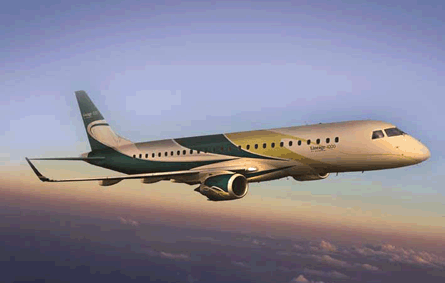 |
|---|
© EmbraerEmbraer delivered 145 business jets last year, including five super-large Lineage 1000s |
Although the world's economy has returned to growth, airframers are still waiting for the full impact of the recovery to be felt. Camelier points out that usually when US corporate profits rise, business aviation experiences growth a year or two afterwards. However, this time he feels things are different.
There are several factors contributing to sluggish business jet deliveries, he argues. Top of the list is the febrile nature of the economic recovery that, according to the latest forecasts, looks as though it could be heading for a lopsided "w" shape. "This certainly has an effect on the potential for new sales in the business aviation market," adds Camelier.
Add to this low utilisation levels among business jet fleets - an indication of overcapacity in the market - and the percentage of aircraft that are up for sale - 14.8% of the global business jet fleet, against a pre-crisis figure of 12% - and Camelier believes it is clear where the drag on sales is coming from.
With sales of smaller aircraft most affected, Embraer, in common with other business jet manufacturers, has cut production rates to suit the market.
To say that it is all doom and gloom, however, would be to focus too closely on the present. Having seen its market share grow from 2.7% in 2003 to 19% in 2010, Embraer is keen to continue this trend. It forecasts that the market will return to some degree of normality through 2012 and 2013. And with its new $50 million Phenom assembly site in Melbourne, Florida due to come on stream this year, the company is planning for growth.
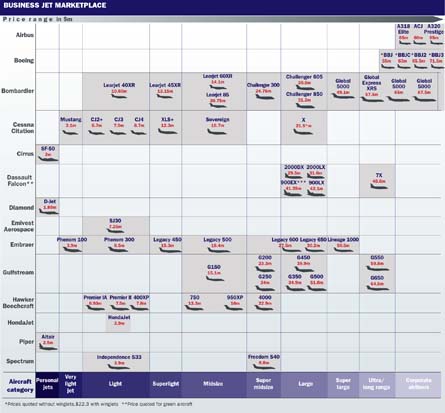 |
|---|
It received a much-needed boost last year with an order from NetJets for up to 125 Phenom 300 light jets. Deliveries of the uniquely branded "Platinum Edition" are set to begin in 2013.
Embraer has in development its Legacy 450 and 500, with first flight of the latter due in the second half of this year. Although the manufacturer envisages most volume growth coming in the lighter end of the market, Camelier predicts that the more profitable aircraft will in the ultra-long-range segment, where Embraer has a conspicuous gap in its range.
However, he plays down the possibility of new aircraft to plug that hole any time soon. "We are keeping our eyes on it, but at the current time we have no plans to develop an aircraft for that segment. The company's engineering resources are tied up with the KC-390 and [any new] E-Jet. We also have our hands full with the new Legacy [450 and 500]."
Besides, he adds, there is no problem with arriving later than the competition "if you arrive with a better product".
GULFSTREAM
Gulfstream's plans to bring its ultra-long-range G650 to market early next year suffered a massive blow on 2 April when the third test aircraft registration N652GD crashed on take-off at Roswell International Air Centre airport, New Mexico, killing its four occupants.
"This was a terrible incident and we have temporarily suspended flight activities," says Larry Flynn, Gulfstream's senior vice-president for marketing and sales. All other certification and production work on the programme continues and all other activities at the company are proceeding normally. "Our focus has been with the families of the victims and assisting the NTSB [National Transportation Safety Bureau] with their investigation. The decision on when we resume flight testing is down to the Federal Aviation Administration."
The certification programme was 75% complete before the crash, and Flynn is sticking to Gulfstream's original commitment to certificate the aircraft later this year.
The orderbook for the G650 totals more than 200, "with the next delivery slot set for 2017", says Flynn. "Support from our customers has been astounding."
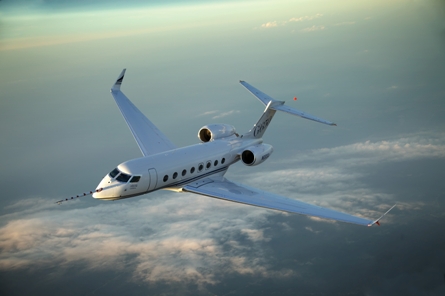 |
|---|
© GulfstreamGulfstream's plans to bring its ultra-long-range G650 to market early next year suffered a massive blow on 2 April when the third test aircraft crashed on take-off, killing its four occupants. |
Gulfstream plans to produce 17 G650s in 2012 increasing to 33 in 2013 and 2014. "We have to remain prudent on our production rates. We realise that 18-24 months is the sweet spot for backlogs, but we have to be cognisant of our employee base [so] won't ramp up too quickly to satisfy market demand," Flynn says.
Elsewhere across its product line, sales have been mixed. Gulfstream delivered 99 business jets last year, with the long-range G550 making up the bulk of the tally. "The market for long-range aircraft is strong," Flynn says. "Half of our market is now international, and the BRIC [Brazil, Russia, India and China] countries are driving the growth. Europe is much weaker at the moment, but the US has shown signs of recovery in the last six months with a number of Fortune 500 companies returning."
The midsize market remains flat, however, hampered by the large volume of pre-owned aircraft available. The G250, which Gulfstream is developing in partnership with Israel Aerospace Industries, is on target for certification and first deliveries this year. Although Flynn is tight-lipped on the order tally of the super-midsize aircraft, he says the last of the G200s - the G250 predecessor formerly known as the Galaxy - will be handed over later in this year, and deliveries of the G250 will begin in 2012.
Meanwhile, Gulfstream is continuing to invest heavily in research and development to bring new products and upgrades to market, says Flynn, adding: "We are also investing large sums in product support both in the US and across the world."
Gulfstream has already spent $400 million upgrading the facilities at its Savannah, Georgia headquarters, including a 65,000m2 (700,000ft2) aircraft service hangar, and another $500 million has been added to the customer and product support pot.
HAWKER BEECHCRAFT
"You cannot underestimate the importance of a good, professional customer support network," says Hawker Beechcraft vice-president Ron Gunnarson. "You are not just selling products, you are selling a service, so we decided last year to concentrate on how we sell, distribute [and] support our global brand."
The airframer decided to "break the world up" into three areas: Asia-Pacific and China; Europe, the Middle East and Africa; and the Americas. "By doing so we can focus on the nuances of each market, and with demonstrators in place within each of these regions we have begun to aggressively promote our iconic brands."
Last year Hawker Beechcraft delivered 73 business jets: 11 Premier IAs, 12 Hawker 400XPs, five Hawker 750s, one 850XP, 28 900XP, 16 Hawker 4000s. Ninety King Air turboprops were shipped last year, bringing the twin's global fleet to nearly 7,000.
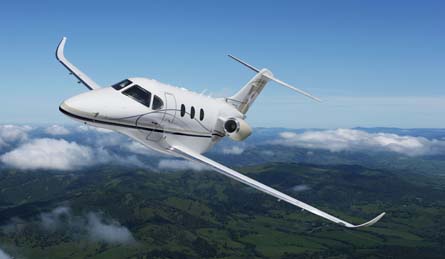 |
|---|
© Hawker BeechcraftHawker Beechraft renamed the Premier II the Hawker 200 |
Gunnarson describes 2010 as "a very challenging time", with the light jet segment "particularly hard hit".
"That forced us to suspend production of the 400XP because it was just not selling," he says. "We will bring it back when market conditions improve as its vital for us to have a presence in the light jet market."
In the meantime Hawker Beechcraft has introduced an upgrade package for the 400XP and its Beechjet 400A predecessor. The $2.64 million revamp includes a Rockwell Pro Line 21 cockpit, Williams International FJ44-4A-32 engines (in place of Pratt & Whitney Canada JT-15D-5 turbofans) and new composite winglets. Certification is set for 2012.
"Product development is the lifeblood of the company," says Gunnarson. "We established a customer advisory board last year to focus on our brand, offerings and competitive positioning." Following "conversations" with around 3,000 customers and dealers, a decision was made to introduce the new more powerful, longer-range King Air 250, scheduled for service entry in the third quarter, and rename the Premier II the Hawker 200. The winglet-equipped entry-level twinjet replaces the Premier IA and is scheduled to enter service in the fourth quarter of 2012.
Last year, the difficult economic circumstances that have prevailed since late 2008 persuaded Hawker Beechcraft to "make some very difficult decisions", says Gunnarson. "These included reducing the footprint in Wichita [Hawker Beechcraft's headquarters] where we are now building fewer parts and focusing mainly on training and assembly."
In contrast, the airframer is expanding its manufacturing facility in Chihuahua City, Mexico to take on more work. Late last year the airframer opened a 16,720m2 building to house sheet-metal fabrication and electrical assembly for its business aircraft line. Another facility will be added this year, bringing the total footprint in Chihuahua City to 46,450m2.
PIAGGIO
For fellow twin-engine turboprop maker Piaggio, the market for executive-configured P180 Avanti IIs has slumped, forcing it to seek new markets for midsize twin pushers. "We have introduced a special missions version of the aircraft, [for missions] including medevac and aerial law enforcement, which has proved very popular and now accounts for 50% of Avanti sales," says Piaggio general manager Eligio Trombetta.
The Italian airframer delivered 11 aircraft last year, compared with 24 in 2009, and plans to deliver 14 aircraft in the coming 12 months. "Last year we received Brazilian certification for the Avanti II and over the course of the year we are hoping to receive Russian and Chinese validation, which will open up these promising markets for us," says Trombetta. US fractional ownership company Avantair is Piaggio's largest customer, with 56 aircraft in its fleet and another 41 aircraft on order.
Piaggio is also gearing up to launch its first business jet. An announcement on risk-sharing partners and other suppliers is likely to be made in the third quarter, but maybe as early as this month's EBACE convention, clearing the way for a formal launch.
The project, code-named P1XX, has been in the works for several years, but the state of the market since 2008 held the Genoa-based airframer back from releasing the Avanti stablemate. Trombetta says the purchase of a third each of the business by two of the world's bluest-chip investors - Abu Dhabi state investment fund Mubadala and Indian conglomerate Tata, joining original shareholders the De Mase and Ferrari families - has given Piaggio the funds and stability it needs to develop the jet. "Once the aircraft is launched we expect to take around four years to bring it to market," he adds.
AIRBUS
Airbus enjoyed a record year in 2010, delivering 15 corporate jets, 13 A318 Elites, Airbus Corporate Jetliners and A320 Prestiges, and two VIP A330/A340s. The airframer has recorded 12 aircraft sales this year, bringing its orders to more than 170 aircraft, mainly from private customers and governments in Asia, Europe and the Middle East notably Saudi Arabia.
"There is a particularly strong demand for our aircraft in China," says Airbus vice-president of executive aviation Francois Chazelle. The company has forecast a market for around five "large corporate jets" a year in Asia-Pacific, the majority of them in greater China, he continues. The Russian market is "also coming back", Chazelle says, and the Middle East made a resurgence in the second half of last year.
He estimates the market for the VIP A380 is for around 30 units. Airbus has sold one, to Saudi Arabia's Prince Al Waleed. His green aircraft is due for delivery to an undisclosed completion centre this year.
"The VIP A380 market will typically come from privately and government-owned Boeing 747-400s and from owners of 777s and A340s wanting to upgrade. The only reason we haven't sold more A380s is because we cannot offer delivery slots before 2015."
BOEING
The revival at the top end of the business aircraft market has also boosted the fortunes of Airbus competitor Boeing Business Jets: "2010 deliveries have been terrific," says BBJ president Steve Jones. Ten BBJ types were delivered last year: four BBJs, two BBJ2s and four BBJ3s, compared with only four aircraft in 2009 and one 747-8 VIP. "There were a few deferrals and cancellations but we managed to find other buyers for these aircraft and keep the skyline intact," he says.
"This year we expect to deliver the first of five 747-8s and a 777-200LR. The 747-8 is selling well, with the demand from the replacement 747SP and -400 replacement market, which accounts for around 25 units."
Like Airbus, Boeing sees "most of the demand" coming from the Middle East and Asia, mostly China. "There is an emerging class of very wealthy people and the prospects are good in China. However, the infrastructure has its challenges: access to airports and [the military controlled] airspace, a shortage of proper fixed-base operations. [But] we are very optimistic about our future prospects here."
MARKET POISED TO REBOUND AFTER "PAINFUL" DOWNTURN
The business aviation market has stopped falling and is expected to grow again next year, driven by a resurgence at the top end of the aircraft spectrum, according to the latest market forecast by US consultancy, the Teal Group.
"Key leading indicators offer encouragement," said Richard Aboulafia, Teal's senior analyst. "Corporate profits and other global wealth indicators are up very nicely. Used-jet availability is falling. Pricing is still soft, and there are a few dark clouds in the world economy that could complicate the recovery, but there are enough positive signs to believe that the market is poised for a turnaround."
Using these assumptions, Aboulafia said, Teal forecasts production of 14,905 aircraft worth $296.8 billion - in 2011 dollars - over the next 10 years. This includes 11,167 business jets worth $237.4 billion, 585 corporate versions of jetliners and regional jets worth a combined total of $41.2 billion, and 3,153 business turboprops worth a total of $18.2 billion.
 |
|---|
"For comparison, the last 10 years - 2001-10 - saw production of 10,226 business aircraft worth $169.7 billion. This includes 7,872 business jets worth $155.7 billion, plus 426 jetliners and regional jets worth $20.4 billion and 2,588 turboprops worth $14 billion," said Aboulafia.
He points to a decline of 28% in aircraft delivery values between the 2008 market peak and 2010.
"These top-line numbers understate the pain felt by a large part of this industry," he continued. The top half of the market - jets costing $26 million and above - grew through the 2008-10 downturn, with deliveries rising by 1.5%. The bottom half - jets costing $4-25 million - fell by a catastrophic 57.1%."
Over the next 10 years, 62% of deliveries will consist of high-end models - such as the long-range Dassault Falcon 7X, ultra-long-range Gulfstream G650 and the Airbus Corporate Jetliner. This is up from 50% before the 2009 market drop, and reflects Aboulafia's belief that the bottom half of the market will not recover faster than the top half.
There is a "permanent shift in favour of more expensive models", Aboulafia continued, so "the industry faces an overcapacity problem in the bottom segment of the market. Unless we see faster-than-expected growth, we might see additional product line eliminations or industry restructuring", said Aboulafia.
Teal also predicts a six-year recovery period, with 10% growth each year starting in 2012. "Compared with prior market recoveries that have exhibited 16-17% compound annual growth rates, this is a conservative forecast. Our conservatism is largely based on the likelihood of greater financial caution in the aftermath of the global credit crisis of 2008-09. Unfortunately, with this growth rate we won't see a recovery to the 2008 peak deliveries level until 2016," said Aboulafia.
On a sanguine note, Teal is confident the debilitating anti-business jet environment that prevailed throughout the downturn has eased. "Preference for, and acceptance of business aircraft is returning, along with world economic growth and trade. Also, the past 15 years have seen business aviation transformed from a backwater market to a key part of the aerospace industry. This transformation will not be reversed," said Aboualfia.
- Additional reporting by Dominic Perry
Source: Flight International





